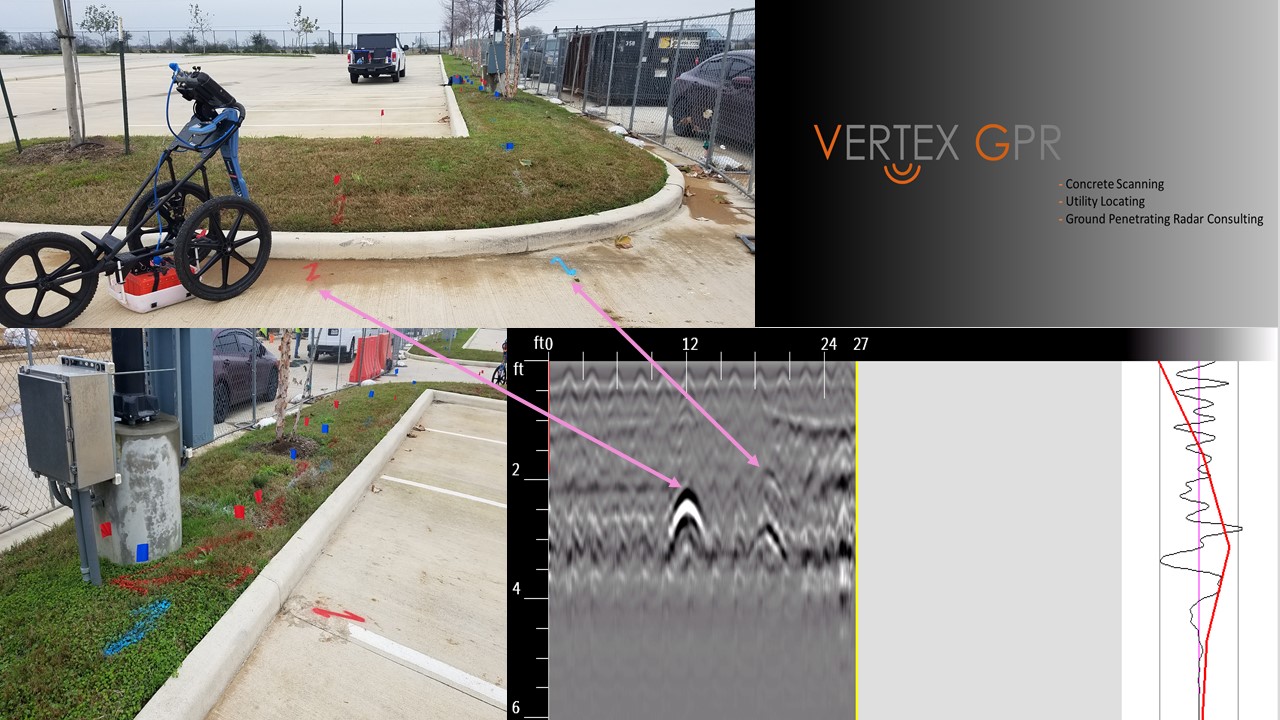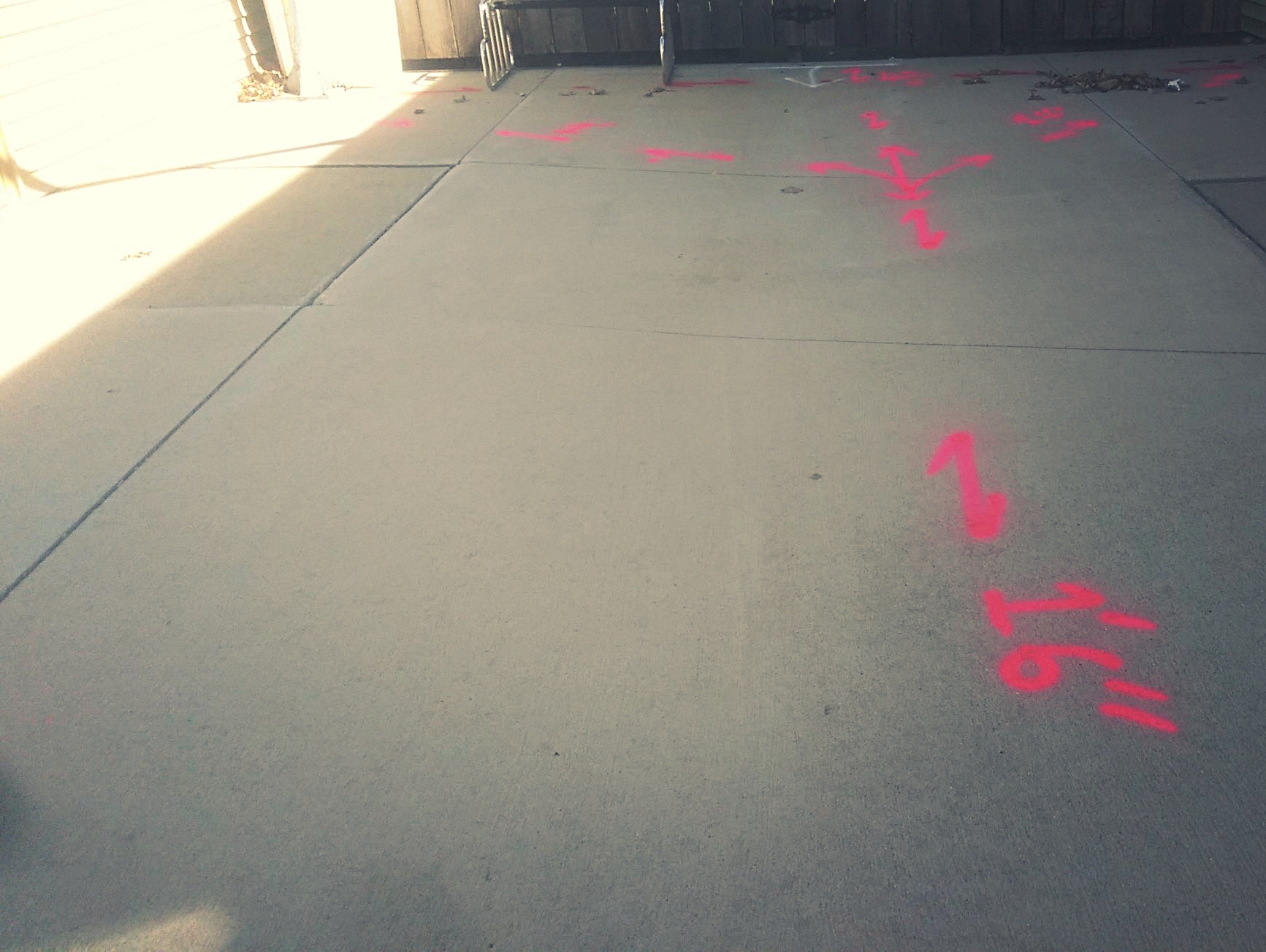Vertex GPR offers private subsurface utility locating services utilizing Ground Penetrating Radar (GPR) and Electromagnetic Detection (EM). Subsurface utility locating is highly important when it comes activities such as soil boring, excavation, directional boring, day-lighting, As-Built confirmation and retrofit design.
Subsurface Utilities To Consider Prior To The Start of Your Project
Electrical | Gas | Communications | Sanitary Sewer | Storm Drains | Steam | Potable Water | Fire Services | Irrigation















6 FREQUENTLY ASKED QUESTIONS ABOUT GPR
1. How Does GPR Work? Ground Penetrating Radar (GPR) works by sending a pulse of energy into a material and measuring the strength and time of the returning signal. The equipment will repeat this action multiple times as the unit is maneuvered across a surface and process the returning data points. This processed data will then appear on the operating systems monitor for viewing by the GPR Operator.
2. How Long Does Data Processing Take? Findings are collected in real time. This means that there is no post job processing that needs to be completed. A GPR Operator can mark out findings as they go along, making it great for timely decisions.
3. How Are Findings Noted? Once an area is scanned and complete, the findings will be laid out directly on the surface. This can be done with spray paint, marking whiskers or pin flags. If items can be categorized they will be color coded and labeled. Reports can also be generated of findings for record keeping.
4. Is GPR Safe? Yes, GPR is completely safe to operate around people. The frequency emissions are less than that of a smart phone.
5. How Mobile Is The Equipment? The equipment is approximately the size of a baby stroller. For a scan to be completed, the minimum area needed is approximately 4'X12' in size.
6. Is GPR Noisy? No, GPR is very quiet to operate.
5 FREQUENTLY ASKED QUESTIONS ABOUT Electromagnetic Detection
1. How Does EM Work? Electromagnetic Detection (EM) works by detecting a magnetic field created by an alternating current on an item. An AC electrical line would be an example of this principle.
2. Can EM Detect Other Utilities Apart From An Electrical Line? Yes, if the utility is made from a conductive material, a tone can be generated by the equipment and put on the utility. Thus it can then be detected.
3. How Deep Can EM Detect? The equipment can detect items up to approximately nine feet deep.
4. Is EM Safe? Yes, EM equipment is completely safe to operate around people.
5. Is EM Noisy? No, the equipment can be set to silent if requested.
















